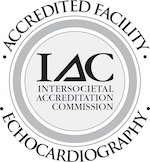Tips to Reducing Your Sodium Intake
Salt…sodium chloride; one of the most common and innocuous compounds on Earth. However, salt can wreak havoc on our bodies when we consume it in excess. Not only does salt cause water retention, bloating, seemingly never-ending thirst and more, it can also cause a wide range of very serious chronic diseases, including high blood pressure, chronic kidney disease, stomach cancer and osteoporosis.
Sadly, many of us are being figuratively and literally poisoned by sodium without even knowing it. As the American palate has become desensitized to salt, food manufacturers and service providers including fast food and full-service restaurants have had to up their sodium game in order to keep our taste buds happy and their food tasting good. You can’t even escape it on a plane, where our taste buds are muted, and food needs to be much saltier to taste good.
What makes it even harder is that once we identify sodium as a problem and understand how it can affect our bodies negatively, it is hard to avoid. Most packaged products in the grocery store are chock-full of sodium. Looking at a menu at a fast food or fast casual restaurant that includes nutrition values will show you that 1000, 2000 or even 3000 mg of sodium are the norm and not the exception. Don’t think that fine dining is any better, however. They also need to make their food taste good, and salt is an easy way to do it.
So how do we stick to the daily recommended allowance of 1500 mg or less of sodium?
Let’s start off by saying that it’s not easy.
In today’s culture, going out to eat or grabbing a fast bite is much more of a norm than it was just 20 or 30 years ago. This means that we have less time to cook and less patience to ensure that what we are eating not only tastes good, but is healthful, too. Ultimately, this results in focusing on the calories – the biggest number on the nutrition label, but often overlooking sodium levels, which can be staggering.
Following are a few tips to help you avoid sodium, while still eating well:
Switch your snacks. Snacks often have a great deal of sodium. Whether it’s a granola bar, trail mix, nuts, potato chips, beef jerky – the list goes on — sodium is almost unavoidable. But, have you tried to switch it up with some fresh fruit and nice crisp veggies? You might be amazed at how good cherry tomatoes taste. Sweet blueberries, strawberries or raspberries can add a sodium free boost to your day. The brightness of these flavors can even make you feel better throughout the day and avoid that midday fatigue that always seems to creep up at work. Further, as you eliminate the sodium and replace it with fresh fruits and vegetables, your vitamin levels go up, and you generally feel a whole lot better. Feeling good during the day helps to be more productive, more motivated, and rest better at night.
Check your nutrition labels. You might love your salad or soup and think it’s very healthful for you, but you may not realize that sodium levels are through the roof. Even reduced-sodium soups can provide over a third of your daily value of sodium in every serving. This is a quick way to blow through your daily limits. But salad dressings and soups are some of the easiest things to make at home and when you are using fresh ingredients, they simply taste better. The little bit of salt you add yourself is nothing compared to the amount of sodium in the typical processed soup or salad dressing.
Make eating out a treat once again. All too often we do not stop and slow down to enjoy our evenings. We feel compelled to go out to eat, whether fast food or fine dining, either because it’s a distraction from a difficult day, or because it’s just so much easier than cooking. But learning to enjoy cooking again can be therapeutic and very motivational. Cooking a wonderful meal for yourself, your loved ones, or your entire family can offer a sense of accomplishment and enjoyment that you simply can’t get by going out. Further, by using fresh ingredients, you can cut out 60, 70, 80 or even 90% of the sodium in your diet. Best of all, you’ll be saving a whole lot of money while eating healthier and better!
Lastly, if you do find yourself needing to go out often, choose your dishes wisely and read up on which dishes contain the most sodium. You’ll also want to keep an eye on your portion sizes. Most restaurants serve twice or three times the amount of food than you should be eating. So, even if what you’re eating might actually be healthful, you’re just eating way too much of it. A good rule of thumb is to ask for a box before you even start your meal. Take about half of your food and drop it right into the box. The result is half the caloric intake, half the sodium intake, and probably feeling a whole lot better at the end of your meal.
Remember, lifestyle changes start small and build. Sodium is a necessary nutrient, and in moderation is actually very good for you. Spend some time to understand where you might be getting too much sodium and how to reduce that and you’ll be healthier all around.







